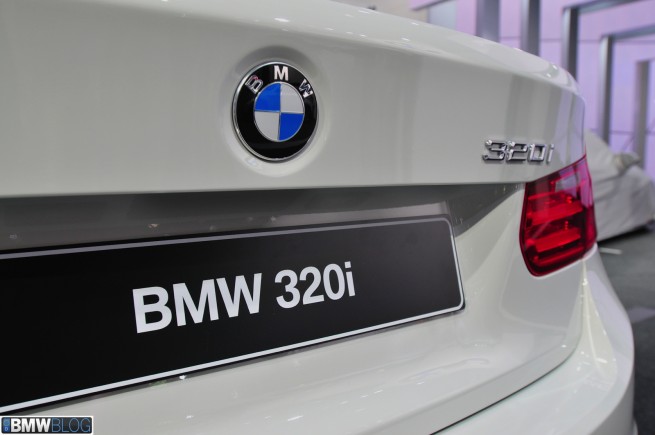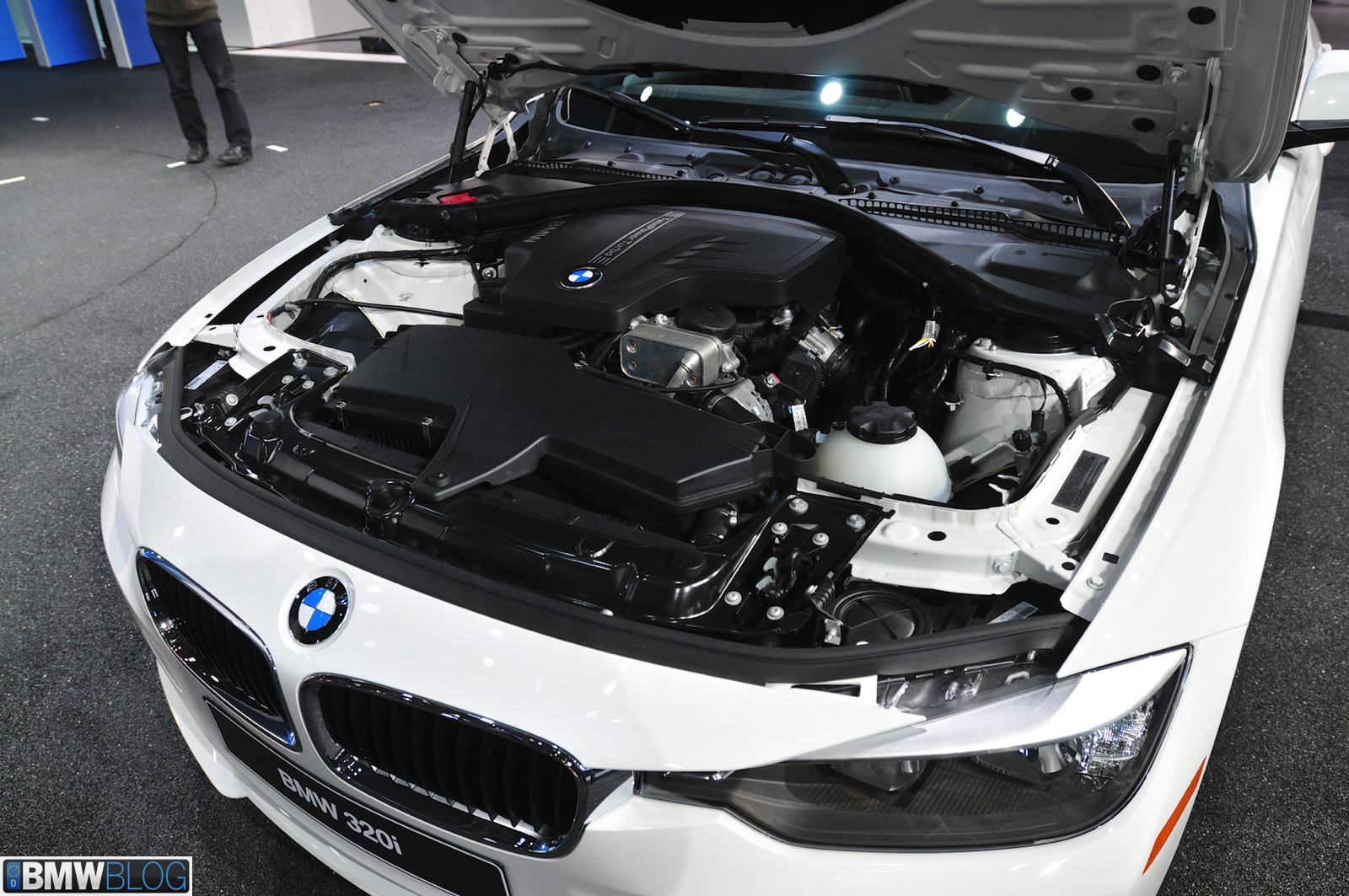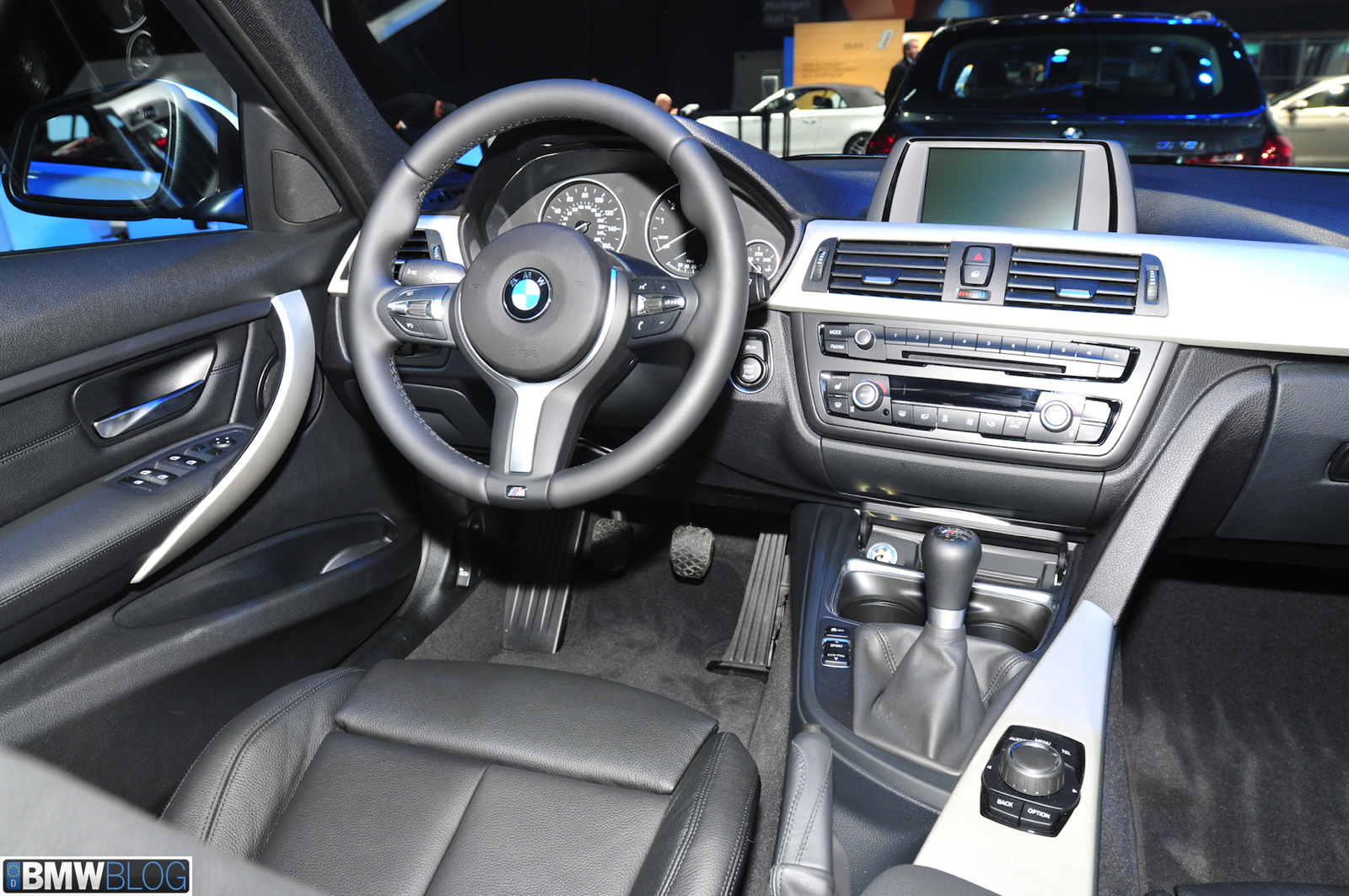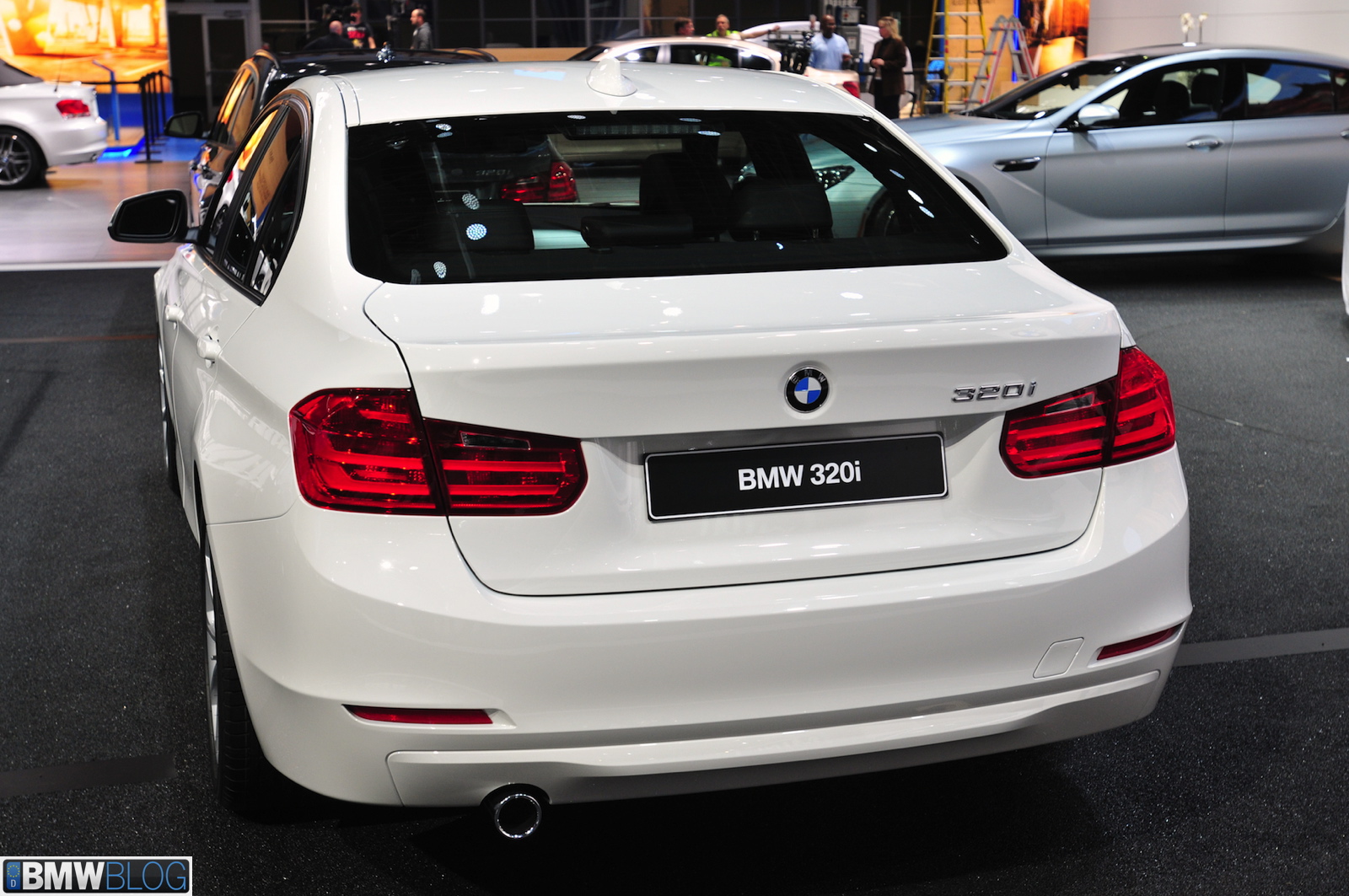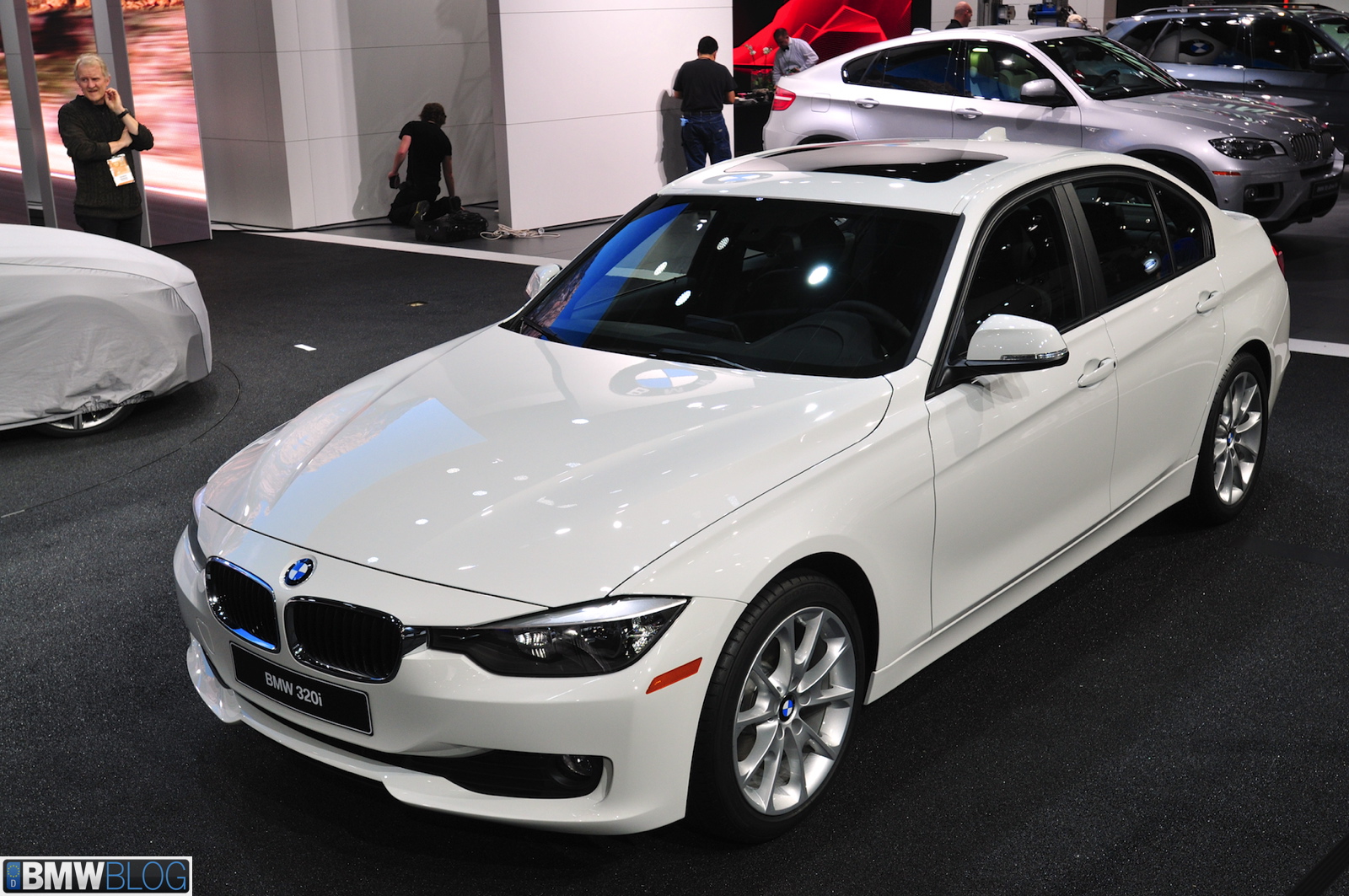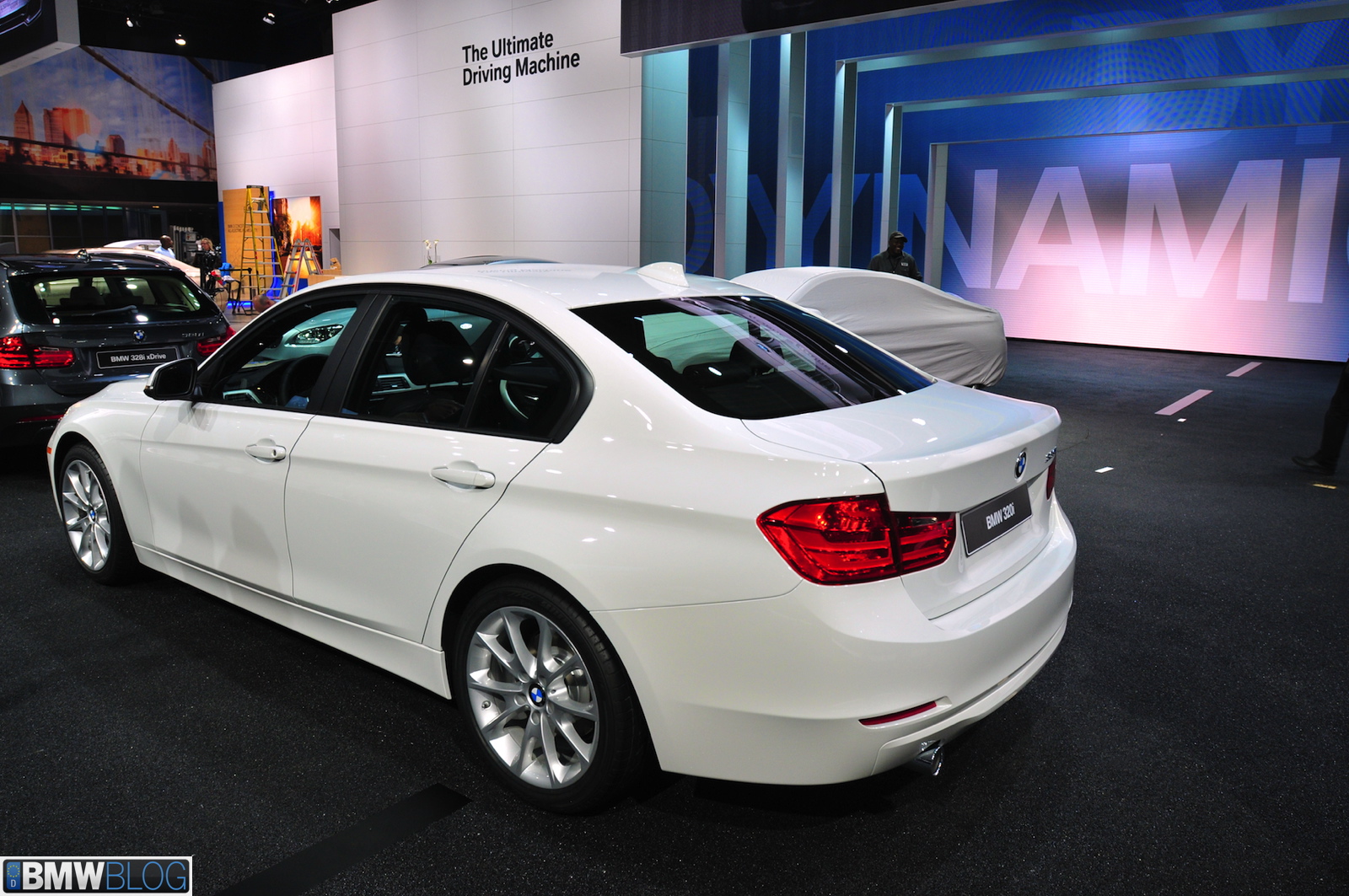With last year’s launch of the sixth-generation BMW 3 Series Sedan, the benchmark by which all sport sedans are measured was raised. Today, BMW opened the latest chapter in the 3 Series story as it announced the new 2013 BMW 320i Sedan for the US market. Constructed with the near-perfect 50:50 balance afforded by BMW rear-wheel drive and priced from $33,445 (including $895 Destination & Handling), the new BMW 320i packs a content-rich punch in the marketplace for premium compact sport sedans.
Sporting a 180-horsepower TwinPower Turbo 4-cylinder engine, the new BMW 320i Sedan goes on sale in late-Spring 2013. Along with the new 320i Sedan, the BMW 320i xDrive Sedan featuring BMW’s intelligent all-wheel drive system will also be available from $35,445 (including $895 Destination & Handling). The broad palette of standard equipment includes Bluetooth smartphone integration and BMW’s Auto Start-Stop function.
Owners will appreciate the incredibly flexible 8-speed automatic transmission, while drivers seeking maximum involvement may opt for a traditional 6-speed manual on the non-xDrive 320i. 17-inch BMW light alloy wheels are standard on the 320i and 320i xDrive, with two different styles of 18-inch light alloy wheels available in combination with Sport Package.
The engine of the new BMW 320i Sedan is BMW’s award-winning 2.0-liter TwinPower Turbo 4-cylinder engine, rated in the 320i at 180 horsepower at 5,000 rpm and 200 lb-ft of torque from 1,250 rpm – 4,500 rpm. 0-60 mph acceleration for the 320i Sedan is estimated to require only 7.1 seconds with either transmission choice. Top speed is an electronically-limited 130 mph. The class-leading fuel efficiency of the BMW 328i Sedan is expected to be sustained by the new 320i Sedan, meaning preliminary estimates for the 320i with 6-speed manual transmission are 22 City / 34 Highway, while 23 City / 33 Highway are estimated for the 320i equipped with 8-speed automatic. The 320i xDrive model is expected to achieve 22 City / 33 Highway (Note: all estimates are preliminary at publication).
Most of BMW’s leading ConnectedDrive elements and vehicle versatility options from the BMW 328i and 335i siblings will be available on the new 320i. These include the aforementioned 8-speed automatic transmission plus BMW Assist telematics services, BMW Apps, heated front and rear seats, heated steering wheel, rear-view camera, xenon adaptive headlights, moonroof, split-folding rear seat, and BMW’s Navigation system.
Befitting The Ultimate Driving Machine, a Sport Package is available for both the 320i and 320i xDrive. For the 320i the package includes 18-inch light-alloy wheels with summer tires and increased top speed limiter, sport seats, M sport suspension, M steering wheel and anthracite headliner. All-season tires with 130 mph speed limiter may be specified in place of the performance tires. For the 320i xDrive the Sport Package includes 18-inch light-alloy wheels with all-season tires, sport seats, M steering wheel, and anthracite headliner. Summer tires with increased top speed limiter can be ordered in place of the all-season tires.
Several other equipment packages are also available for the 320i Sedan, including Cold Weather Package, Premium Package, Driver Assistance Package, and Lighting Package. The full complement of exterior colors from the 328i Sedan is available, with exception of Estoril Blue Metallic which requires M Sport Line (unavailable on 320i). 320i buyers will also enjoy a choice of standard Leatherette or optional Dakota Leather upholstery, both in a choice of Venetian Beige or Black.
BMW’s innovative 8-speed automatic gearbox – which was a first in the segment when introduced last year on the 328i and 335i Sedans – opens up a whole new level of driving experience. Compact and exceptionally efficient, it allows the new BMW 320i to match or outperform models fitted with the standard six-speed manual gearbox in terms of fuel efficiency (actual results vary depending on drive cycle). The new 8-speed automatic brings together shift comfort, dynamic performance and efficiency of the highest order, making it the perfect partner for the new 320i sedan’s dynamic potential.
As components of the BMW EfficientDynamics technology line-up, the Auto Start-Stop function, Brake Energy Regeneration, and need-based operation of ancillary components (including an on-demand air conditioning compressor) also play their part in reducing fuel consumption. Added to which, the Driving Dynamics Control switch, which allows the driver to choose between Comfort, Sport, and ECO PRO mode, gives both models the potential to further improve these figures. ECO PRO mode helps drivers maximize fuel economy through their driving style, thereby enabling them to increase the distance they can travel between visits to the pumps.
Sporty power delivery, outstanding efficiency and ride comfort.
The sixth generation BMW 3 Series sports sedan offers top-level agility and driving dynamics, and they combine all this with new levels of comfort. At the same time, there is no change to the proven basic concept comprising high-performance engines, a sporty chassis and a rigid, lightweight body. After all, over the past 35 or more years, drivers have come to expect dynamic, sporty driving enjoyment as a matter of course in a BMW 3 Series model, while powertrain and chassis technology rank as a core strength of the brand. A longitudinally mounted engine, rear-wheel drive and a balanced (50:50) weight distribution are a formula that makes the BMW 3 Series the sportiest sedan in its segment.
At launch, the new BMW 3 Series Sedan will be offered with two high-torque, refined and fuel-efficient engines, both feature the latest BMW TwinPower Turbo technology. They comprise the familiar 6-cylinder inline engine and a new-generation 4-cylinder engine. Both engines offer impressive driving dynamics coupled with substantially reduced fuel consumption and emissions. At first sight contradictory and conflicting technical objectives have been ingeniously resolved by BMW. For example, the dynamism goes hand in hand with outstanding performance on the cost and environmental front, since emissions for both the engines are well within the US ULEV II limits. The Driving Experience Control switch with ECO PRO mode provides the opportunity to extend these savings even further.
Power is delivered to the rear wheels either via a standard 8-speed automatic or, optionally, via a 6-speed manual transmission. Both the manual and the automatic models are equipped with the Auto Start-Stop function for further savings.
Advanced suspension technology, featuring a large number of light-alloy components and new tuning, along with Servotronic speed sensitive power steering, low vehicle weight and a balanced weight distribution top off a dynamic package, making the new BMW 3 Series Sedan an exemplar of sporty handling combined with increased comfort.
BMW’s new 4-cylinder gasoline engine with TwinPower Turbo technology sets a new benchmark for driving dynamics and efficiency.
With the launch of the new sports sedan, an ultra-modern 4-cylinder engine will make its debut in the BMW 3 Series. In keeping with the dynamic overall theme of the new BMW sports sedan, this new-generation turbocharged engine offers plenty of power and performance, responsive acceleration, powerful torque, a high rpm ceiling and low weight. The new 4-cylinder engine, which provide noticeably livelier power for maximum driving enjoyment, also come with lower fuel consumption than its predecessor.
The state-of-the-art, lively 2.0-litre engine marks a return to the popular sports sedan’s roots – it was with lightweight, high-performance 4-cylinder engines in a similar vein that the BMW 3 Series made its debut back in 1975, with the first 6-cylinder engines for this series making their appearance at the 1977 Frankfurt Motor Show. A 6-cylinder continues to top the engine line-up in the new BMW 3 Series as the 335i, 335i xDrive, and ActiveHybrid3 models.
The significant upgrade in power and efficiency is chiefly down to the use of BMW TwinPower Turbo technology, which combines High Precision Direct Petrol Injection, Double-Vanos variable camshaft timing and Valvetronic variable valve timing along with twin-scroll turbocharging. On the new-generation 4-cylinder engine, this world-exclusive technology package from BMW again provides a very efficient way to extract more power from the engine, rather than taking the route of a much larger displacement and, in the process, adding to the weight and therefore to fuel consumption. This explains why the more dynamic performance and driving enjoyment does not come at the expense of higher fuel consumption and emissions.
In the new BMW 320i, the BMW TwinPower Turbo 4-cylinder’s displacement of 1,997 cc delivers maximum power of 180 hp at 5,000 rpm while, thanks to twin-scroll turbocharging, the maximum torque of 200 lb-ft is developed from just 1,250 rpm and remains constant up to 4,500 rpm. These statistics translate to commensurately dynamic performance: the new BMW 320i accelerates from 0 to 60 mph in just 7.1 seconds, on its way to an electronically governed top speed of 130 mph. The engine responds instantly when the driver demands more throttle, and the vigorous and almost linear power delivery from only slightly above idle, which continues all the way into the higher rpm range, is duly impressive.
BMW TwinPower Turbo technology in the new 4-cylinder engine.
This new engine is the most powerful in a new generation of 4-cylinder engines designed in accordance with the BMW EfficientDynamics strategy, which aims to combine increased driving enjoyment with reduced fuel consumption and emissions. In technical terms, this new 4-cylinder engine is modeled on the current multi-award-winning 6-cylinder inline engine with BMW TwinPower Turbo technology (N55), which is the benchmark in its class for dynamic power delivery and impressive efficiency. This world-exclusive technology combines High Precision Direct Petrol Injection, Double-Vanos variable camshaft timing and Valvetronic variable valve timing with twin-scroll turbocharging.
These features give the new BMW 320i the sort of power which with a naturally aspirated engine would require more cylinders and larger displacement. At the same time, with its all-aluminum crankcase, this engine is lighter and more compact than a 6-cylinder engine of equivalent power. This has obvious benefits for driving dynamics: the reduced load on the front axle gives this BMW sports sedan greater agility and further improved steering and cornering characteristics.
Twin-scroll turbocharging.
The new 4-cylinder engines also feature twin-scroll turbocharging. This means that the exhaust stream from cylinders 1 and 4, and the exhaust stream from cylinders 2 and 3, follow separate spiral-shaped paths to the turbine wheel. This reduces exhaust back-pressure at low engine rpm, allowing the energy of the exhaust gas pulses to be utilized as efficiently as possible. The result is instant throttle response and fast-revving performance which BMW drivers can instantly translate into driving pleasure.
Valvetronic, Double-VANOS and High Precision Direct Injection.
The combination of a high power output and a simultaneous reduction in emissions is achieved by Valvetronic variable valve timing and Double-Vanos variable camshaft timing. The latest generation of the Valvetronic system features a faster-acting, optimized stepper motor with integrated sensor. Seamlessly variable control of intake valve lift dispenses with the need for a throttle butterfly. Instead, the air mass is controlled inside the engine, resulting in faster response. At the same time, pumping losses have been reduced to a minimum.
The excellent efficiency is also down to the High Precision Direct Injection system. Centrally positioned between the valves, solenoid injectors precisely control the supply of fuel. The fuel is injected very close to the spark plug, with a maximum injection pressure of 200 bar (2900 psi), resulting in clean and homogeneous combustion. The cooling effect of the directly injected fuel also results in a higher compression ratio than on port injection engines, bringing further efficiency improvements.
Exceptional performance assisted by innovative design features.
The exceptional performance of the new engine is also due to various innovative features of the core engine. For example, twin balancer shafts positioned at different heights result in optimized vibration absorption, while a centrifugal pendulum absorber integrated in the dual-mass flywheel brings a noticeable reduction in irregular running at low engine rpm. The driver can therefore make full use of the strong low-end torque without sacrificing smoothness. These factors all help to explain why the new 2.0-litre 4-cylinder engine achieves refinement, noise and vibration of a kind that was previously confined to BMW 6-cylinder engines.
6-speed manual transmission available.
The sporty 6-speed manual transmission in the new BMW 3 Series boasts an easy and precise shifting action and optimal ratio spacing. The lightweight, compact format and innovative, low-friction design help to further enhance shift feel and efficiency. The new BMW 320i features an optimized transmission with ratios precisely matched to the performance characteristics of the engine. The optimal ratio spacing makes for powerful sprinting performance and fast mid-range acceleration, all combined with a reduction in fuel consumption.
Precision chassis engineering sets new standards:
sporty handling, high agility and increased comfort.
In the sixth model generation, too, dynamism and performance are among the stand-out features of the BMW sports sedan. These qualities are underpinned by a precision-engineered chassis with four-wheel independent suspension that perfectly complements a winning formula: a longitudinally mounted engine, rear-wheel drive, balanced weight distribution and torsionally stiff body. In the new BMW 3 Series the engineers have further improved the already outstanding handling qualities of the predecessor and its excellent agility and directional stability, while at the same time noticeably improving comfort. To achieve this, they have made extensive use of extra-lightweight chassis components, sophisticated and perfectly tailored axle kinematics and a high-precision steering system. State-of-the-art electronic control systems on the new BMW 3 Series Sedan help manage the vehicle dynamics and ensure that the combination of outstanding sporty performance and increased comfort can be enjoyed to the full and with complete peace of mind.
With friction-reduced wheel bearings and ball joints, aerodynamic improvements at the rear axle and reduced rolling-resistance tires, the whole chassis plays its part in reducing fuel consumption and thus emissions.
A wheelbase of 110.6 inches / 2,810 mm (+ 1.96in/50 mm) and a front and rear track width of 60.3 / 1,543 (+ 1.46 in / 37 mm) and 61.9 / 1,583 millimeters (+ 1.85 in/ 48 mm) respectively give the new BMW 3 Series Sedan a more road-hugging stance than its predecessor, while the weight-optimized powertrain and lightweight body design result in a perfectly balanced 50:50 weight distribution.
Double-pivot front axle with spring struts and anti-roll bar.
The new BMW sports sedan adopts an innovative but proven front axle design which provides an optimal fusion of driving dynamics and comfort. The suspension components combine maximum stiffness with minimum weight. Aluminum torque struts, wishbones and swivel bearings bring a substantial reduction in unsprung masses. At the same time, the absence of torque steer makes it easier to gear the kinematics of the double-joint axle to agility and dynamism.
Advanced axle design further refined:
five-link rear axle improves driving dynamics and comfort.
Incorporating various significant improvements and refinements, the rear axle of the new BMW 3 Series makes an important contribution to the new model’s improved driving dynamics and comfort. Its space-saving design is based on the tried-and-tested five-link design used on the predecessor model, with elastokinematics which have been specially tailored to the new sports sedan, featuring long spring travel and precise and confident wheel location in all situations.
Extra-wide mounts and supports on the wheel carriers for track and camber, extremely stiff control arms, the stiff axle subframe and thrust arms connecting the suspension and body provide an excellent basis for the agile and, at the same time, comfortable overall suspension qualities of the new BMW 3 Series Sedan. The large mounts and supports at the rear axle not only affect handling, they are also important for ensuring good acoustic insulation between the powertrain and suspension, particularly on vehicles with a powerful, high-torque engine. Thanks to the effective insulation of the powertrain from road excitations, the new rear axle also provides first-class noise and vibration damping.
The classic BMW 3 Series rear-wheel-drive set-up and a balanced weight distribution also provide the ideal basis for resolving the conflict between ride and handling. As a result, the new BMW 3 Series impresses with extremely sporty handling combined with highest standards of stability and comfort. Last but not least, the reduced-friction wheel bearings, robust powertrain isolation and carefully targeted aerodynamics modifications at the rear axle also contribute to improved driving dynamics and efficiency.
High-performance lightweight brake system.
The dynamic performance of the sports sedan calls for an equally powerful brake system. The new BMW 320i uses lightweight floating caliper brakes at all corners with large vented discs. This high-performance system also features outstanding heat tolerance, excellent wet braking performance, easy operation and precise control. Together with the large wheels and wide tires, it provides the sports sedan with highly effective deceleration.
The brake system is further supported by various state-of-the-art electronic safety systems, which are integrated into the Dynamic Stability Control (DSC) system for improved driving dynamics and safety. The DSC system incorporates the following functions: Anti-lock Braking System (ABS), Automatic Stability Control (ASC), Dynamic Traction Control (DTC), Dynamic Brake Control (DBC) and Cornering Brake Control (CBC), along with start-off assist, brake drying and an electronic limited slip function for the rear differential, which can be activated using the “DSC Off” button.
If the worst comes to the worst: BMW Assist enhanced Automatic Collision Notification with automatic vehicle location.
In the event of an accident in the new BMW 3 Series, the enhanced Automatic Collision Notification system from BMW ConnectedDrive allows the emergency services to receive detailed information on the type of collision and the likelihood trauma level injuries before arriving at the scene of the accident. That allows first responders to prepare the appropriate medical care in advance for those involved in the crash. The precise position of the car and vehicle type are specified, and all the data gathered by sensors in the car is forwarded. The information provides indications as to the nature and severity of the collision, while the deployment of the car’s restraint systems gives the emergency services an idea of the number of injured people and allows frontal, rear, side or multiple collisions to be identified and differentiated. This is possible thanks to an advanced algorithm developed in partnership with the William Lehmann Trauma Center in Miami, Florida that used transmitted vehicle data to estimate the likelihood of severe injuries as a result of a crash. As well as automatic activation, the system also allows the driver or front passenger to trigger the Emergency Call manually and to be connected with the BMW call center without delay.



